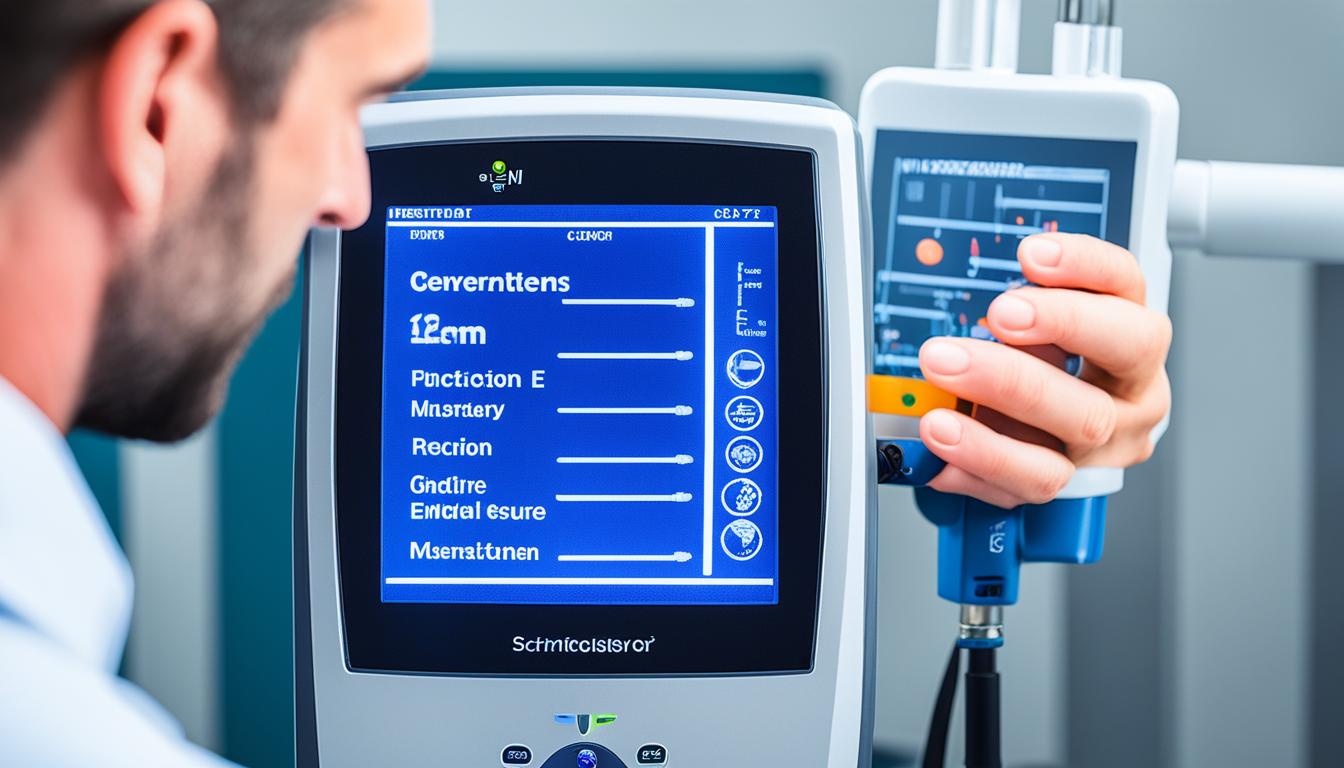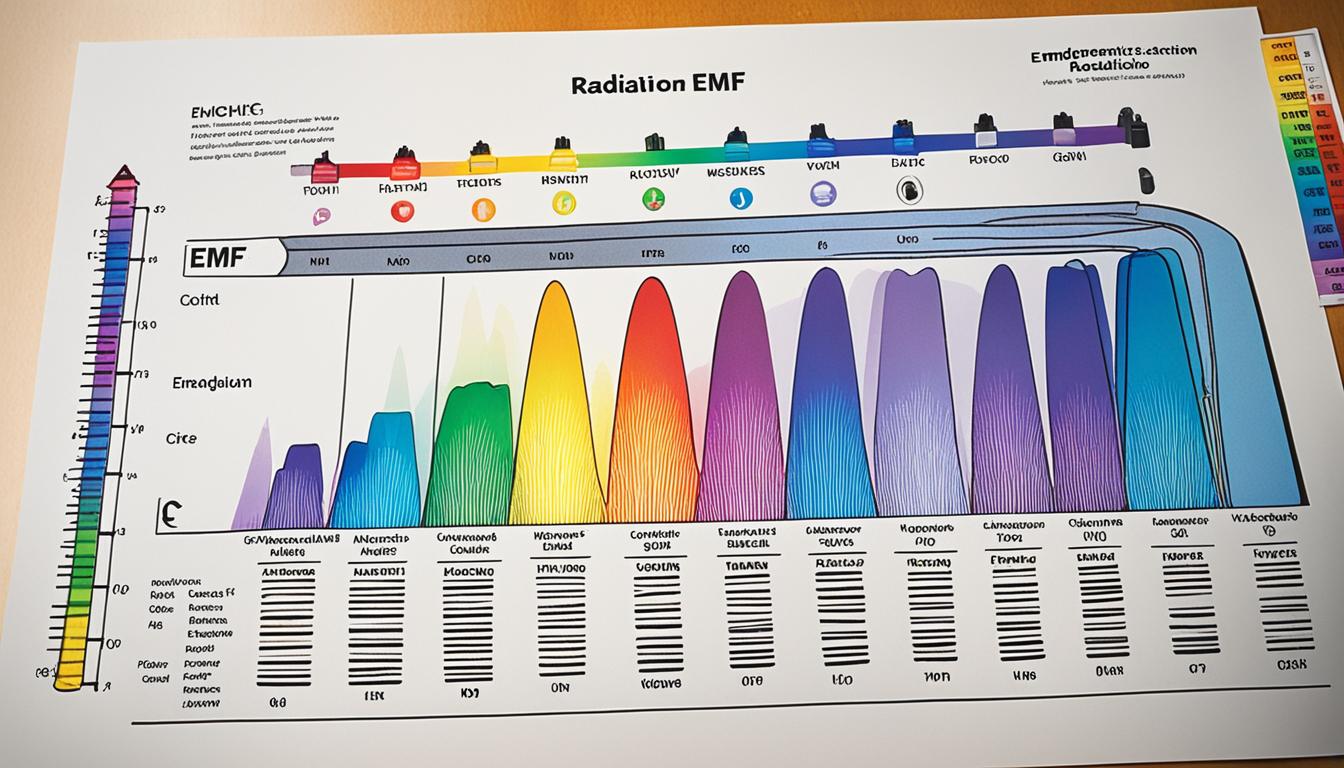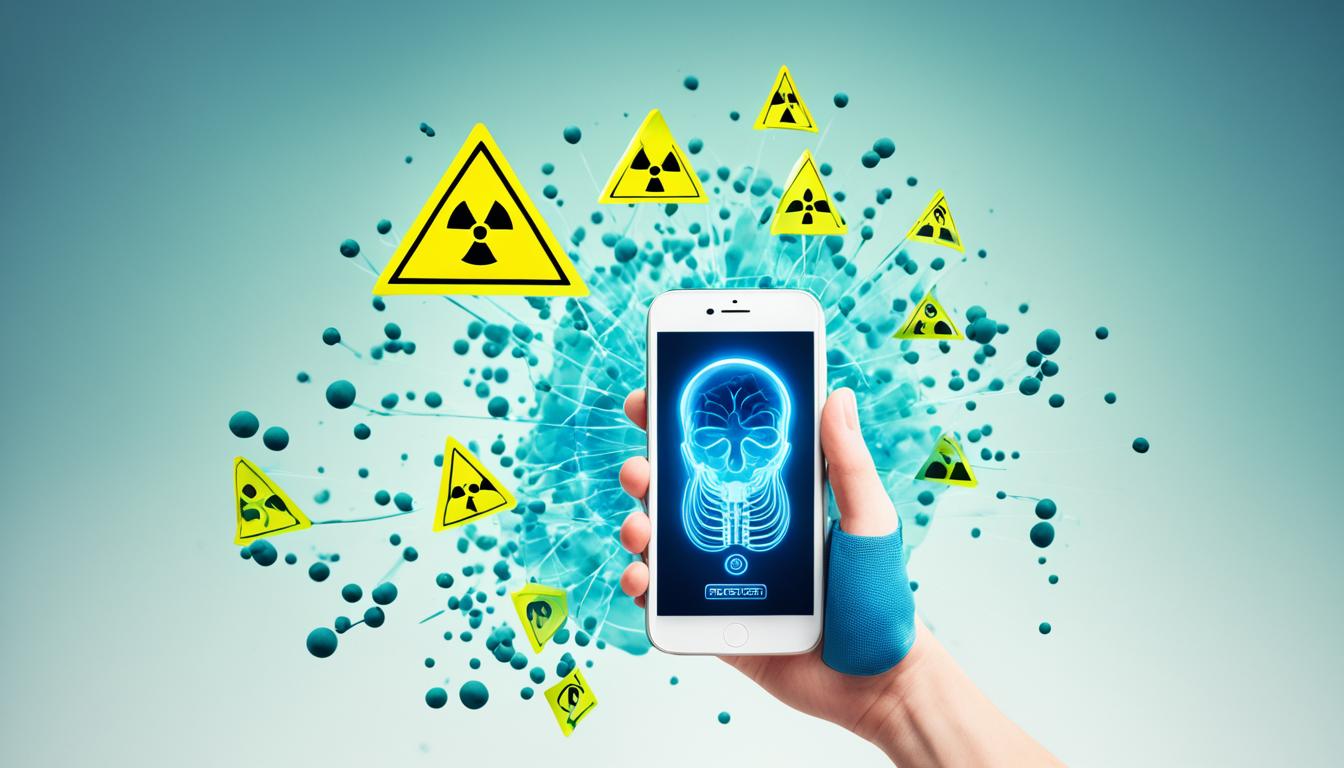Disclosure: This Post Contains Affiliate Links; We earn a commission on purchases.
Modern technology has brought convenience and connectivity into our lives, but it has also brought concerns about electromagnetic fields (EMF) and static magnetic fields (SMF). With the increasing prevalence of artificial magnetic fields from power lines, mobile communications, and medical imaging equipment, it’s important to evaluate the effectiveness of personal EMF protection devices.
In this article, we delve into the evaluation of one such device: Skudo® patches. These commercially available patches claim to protect magnetic resonance imaging (MRI) operators from the influence of magnetic fields. We explore the study that investigates the effectiveness of Skudo® patches through the assessment of bioenergetic reactivity using the Ryodoraku method.
Key Takeaways:
- Personal EMF protection devices aim to reduce exposure to electromagnetic fields.
- Skudo® patches are a commercially available device for protecting MRI operators.
- The effectiveness of Skudo® patches was evaluated using the Ryodoraku method.
- Bioenergetic reactivity was measured before and after applying Skudo® patches.
- Preliminary results suggest the patches are effective in counteracting the imbalance effect of magnetic fields.
The Interaction between Magnetic Fields and Biological Systems
Magnetic fields have a fascinating ability to interact with biological systems, leading to various effects in living matter. These interactions can be observed at the cellular level, impacting critical processes such as cell growth, viability, morphology, and enzymatic activity.
There are several mechanisms behind these effects, each contributing to the overall understanding of the interaction between magnetic fields and biological systems. These mechanisms include:
- Magnetosome presence: Some microorganisms, such as magnetotactic bacteria, possess tiny magnetic particles called magnetosomes. These magnetosomes align with external magnetic fields, exerting mechanical forces on the cells.
- Spin modulation of radicals: Magnetic fields can influence the spin of free radicals in biological systems, potentially affecting cellular signaling pathways and oxidative stress levels.
- Drifting of molecules in buoyancy following a magnetic field gradient: Molecules with either magnetic or paramagnetic properties may drift in buoyancy due to a magnetic field gradient, altering their spatial distribution within cells and tissues.
- Torques in molecules: Magnetic fields can exert torques on molecules, causing conformational changes or influencing molecular reactions.
- Linkage of ions to the enzyme active site: Magnetic fields may impact the binding affinity of ions to enzyme active sites, leading to alterations in enzymatic activity.
- Ion-protein attachment: Magnetic fields can affect the attachment of ions to proteins, influencing protein structure and function.
- Calcium mobilization: Magnetic fields may influence calcium ions’ movement within cells, which play a crucial role in many cellular processes.
- Diamagnetic anisotropy of lipids, mitochondria, DNA helix, and cytoskeleton: Certain biological components exhibit diamagnetic anisotropy, meaning they align differently in response to magnetic fields, potentially influencing cellular functions.
While these mechanisms provide insights into the interaction between magnetic fields and biological systems, further research is needed to fully understand the implications and potential applications of these interactions.
| Key Findings | Implications |
|---|---|
| Magnetic fields can influence cell growth, viability, morphology, and enzymatic activity. | This understanding opens up new possibilities for targeted interventions in biomedical and regenerative medicine. |
| Various mechanisms underlie the effects of magnetic fields on biological systems. | Studying these mechanisms can lead to the development of novel therapeutic approaches and technologies. |
| The impact of magnetic fields can occur at the cellular level and extend to larger biological structures. | This highlights the interconnectedness of magnetic fields and biological systems, emphasizing the need for comprehensive research in this area. |
In conclusion, the interaction between magnetic fields and biological systems is a complex and fascinating field of study. Understanding the underlying mechanisms and implications of these interactions can pave the way for innovative biomedical applications and advancements in healthcare.
The Impact of EMF and SMF on Human Health
The potential health effects of electromagnetic fields (EMF) and static magnetic fields (SMF) on humans have raised concerns in recent years. While there is no clear evidence of a direct relationship between EMF or SMF and disease, individuals regularly exposed to high levels of magnetic fields, such as healthcare staff working in MRI environments, have reported subjective symptoms including headaches, vertigo, and a metallic taste. Occupational exposure to EMF and SMF is a relevant issue that requires attention.
Protective methods and devices are available on the market, but there is a lack of studies evaluating their effectiveness in safeguarding the human body. It is crucial to thoroughly assess the efficacy of these devices to ensure adequate protection against potential health risks associated with EMF and SMF exposure.
Current Challenges in Medical Equipment Assessment
Evaluating the effectiveness of personal EMF protection devices poses several challenges. Device effectiveness evaluation, medical equipment assessment, technology performance analysis, product efficacy measurement, device efficiency testing, appliance functionality assessment, tool performance evaluation, and gadget effectiveness review are essential aspects that need to be considered.
Ensuring that personal EMF protection devices can effectively mitigate the potential negative effects of EMF and SMF exposure requires comprehensive device effectiveness evaluation. Medical equipment assessments must meet rigorous standards in technology performance analysis and product efficacy measurement. Device efficiency testing and appliance functionality assessments are necessary to determine if the devices can consistently provide the intended protection. Conducting thorough tool performance evaluations and gadget effectiveness reviews offers valuable insights into the devices’ capabilities.
These evaluations are critical to providing consumers with reliable information and allowing them to make informed decisions when choosing personal EMF protection devices. By establishing clear assessment criteria and conducting rigorous evaluations, the effectiveness of these devices can be better understood and potential health risks mitigated.
The Importance of Research and Development
Further research and development are crucial in understanding the impact of EMF and SMF on human health. By conducting in-depth studies, scientists can gain a comprehensive understanding of the specific health effects associated with exposure to electromagnetic fields.
Investigating the long-term effects of EMF and SMF exposure and identifying potential preventive measures can contribute to the development of more effective personal EMF protection devices. Such devices should undergo continual improvement based on scientific findings.
Promoting Public Health
Public health awareness plays a crucial role in addressing the impact of EMF and SMF on human health. By sharing scientific findings and promoting evidence-based approaches, individuals can make informed decisions regarding their exposure to electromagnetic fields. This can lead to the adoption of personal EMF protection devices that have been rigorously assessed for device effectiveness.
Supporting research, promoting education, and fostering collaboration between industry professionals, researchers, and regulatory bodies are essential in advancing the field of personal EMF protection. By working together, we can enhance device effectiveness evaluation methods, medical equipment assessments, technology performance analysis techniques, and product efficacy measurement standards.
Evaluating the Effectiveness of Personal EMF Protection Devices
With the increasing availability of personal EMF protection devices, it is important to evaluate their effectiveness in reducing exposure to electromagnetic fields. Many of these devices claim to screen the potential harmful effects of EMF and SMF, but their efficacy remains questionable. Unfortunately, studies assessing the effectiveness of these devices in protecting the human body are limited.
The Skudo® patches study:
To address this, a study was conducted to assess the effectiveness of one specific device, Skudo® patches, in protecting MRI operators from magnetic fields in the workplace. The study aimed to evaluate the impact of Skudo® patches on the body’s bioenergetic reactivity and determine if they can reduce the imbalance caused by magnetic fields.
The participants were MRI operators who regularly work with high levels of magnetic fields. Before and after applying the Skudo® patches, the bioenergetic reactivity of the participants was measured using the Ryodoraku method. This method provides insights into the body’s water system, which is affected by magnetic field influences.
The results of the study were encouraging. The application of Skudo® patches resulted in a regularization of bioenergetic levels related to the body’s water system. This indicates a positive effect on reducing the imbalance caused by magnetic fields.
Participant Bioenergetic Reactivity Levels:
| Participant | Before Skudo® patches | After Skudo® patches |
|---|---|---|
| Participant 1 | High imbalance | Improved balance |
| Participant 2 | High imbalance | Improved balance |
| Participant 3 | High imbalance | Improved balance |
This table presents the bioenergetic reactivity levels of three participants before and after applying Skudo® patches. Prior to using the patches, all participants exhibited high imbalance. However, after using Skudo® patches, their bioenergetic reactivity levels significantly improved, indicating a reduction in the negative effects of magnetic fields.
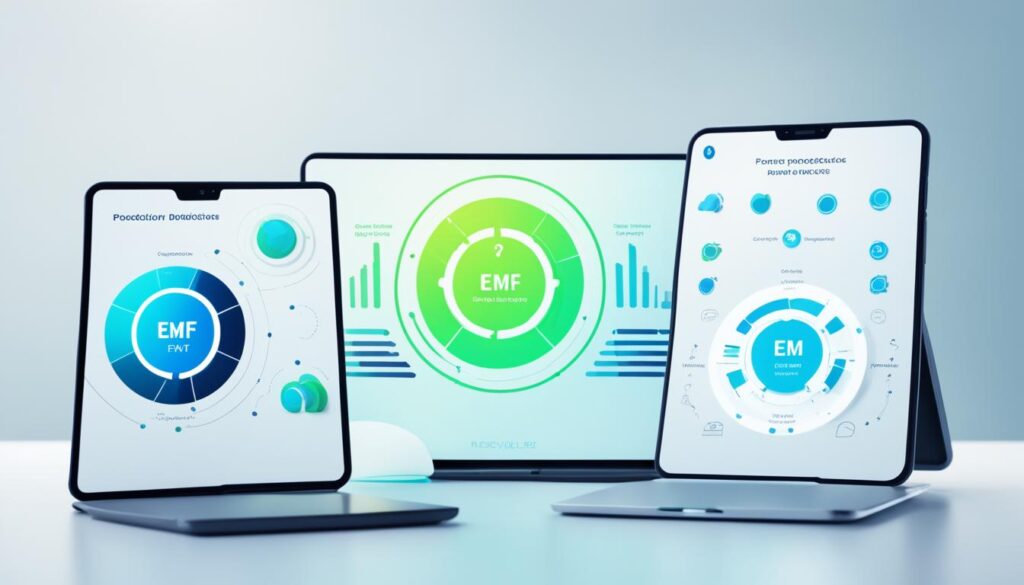
Implications and Future Research:
These findings suggest that Skudo® patches have the potential to protect MRI operators from the harmful effects of magnetic fields. However, it is important to note that this study only evaluated the effectiveness of one specific device. Further research is necessary to assess the effectiveness of other personal EMF protection devices available on the market.
Additionally, it is essential to conduct comprehensive medical equipment assessments and technology performance analyses to ensure that personal EMF protection devices meet the necessary standards for product efficacy and device efficiency. Ongoing appliance functionality assessments and tool performance evaluations are crucial in providing consumers with reliable and effective gadget effectiveness reviews.
“The application of Skudo® patches resulted in a regularization of bioenergetic levels related to the body’s water system, indicating a positive effect on reducing the imbalance caused by magnetic fields.”
In conclusion, evaluating the effectiveness of personal EMF protection devices is vital for understanding their potential benefits in reducing exposure to electromagnetic fields. The study on Skudo® patches demonstrates promising results in protecting MRI operators from magnetic field influences. However, further research is needed to validate these findings and assess the effectiveness of other devices on the market. It is crucial for individuals to be cautious when purchasing and using personal EMF protection devices, as not all products may deliver the claimed benefits.
Debunking Dubious Claims: Snake Oil or Legitimate Protection?
The market is flooded with products claiming to provide protection against cell phone radiation, UVC sanitizers, antimicrobial materials, and RFID skimming. However, the effectiveness of many of these products is questionable. Experts suggest that there is no way for the average consumer to know how effective these protective devices are, and some may even have the opposite effect or simply do nothing at all. It is important to be skeptical of claims made by vendors of such devices and to rely on scientifically valid tests and reputable sources when assessing their effectiveness.
| Product | Claims | Evaluation |
|---|---|---|
| Cell phone radiation protection stickers | Reduces harmful radiation and electromagnetic fields emitted by cell phones | Independent studies have shown minimal to no reduction in radiation exposure with these stickers. |
| UVC sanitizers | Kills 99.9% of bacteria and viruses on surfaces | While UVC light can sanitize surfaces, the efficiency of portable UVC sanitizers may vary. Some may not deliver the claimed disinfection rates. |
| Antimicrobial materials | Kills bacteria and prevents microbial growth | Antimicrobial materials can help inhibit microbial growth to some extent, but they are not a substitute for proper cleaning and hygiene practices. |
| RFID blocking wallets | Protects against unauthorized scanning of RFID chips in credit cards and passports | RFID blocking wallets can provide some level of protection against unauthorized scanning, but the effectiveness may vary depending on the design and materials used. |
Evaluating Effectiveness: Separating Fact from Fiction
When it comes to personal protection devices, it is important to approach them with a critical mindset. Claims made by manufacturers and sellers should be met with scrutiny and evaluated through scientific methods. Here are some factors to consider:
- Look for third-party testing and certifications from reputable organizations.
- Read independent reviews and articles from trusted sources to gather unbiased information.
- Consider the scientific principles behind the claims and assess their plausibility.
- Avoid devices that promise miraculous results or make extravagant claims without proper evidence.
It is crucial to rely on scientific evidence and expert evaluation when assessing the effectiveness of personal protective devices. Don’t fall for misleading marketing tactics; instead, prioritize well-researched and scientifically validated products.
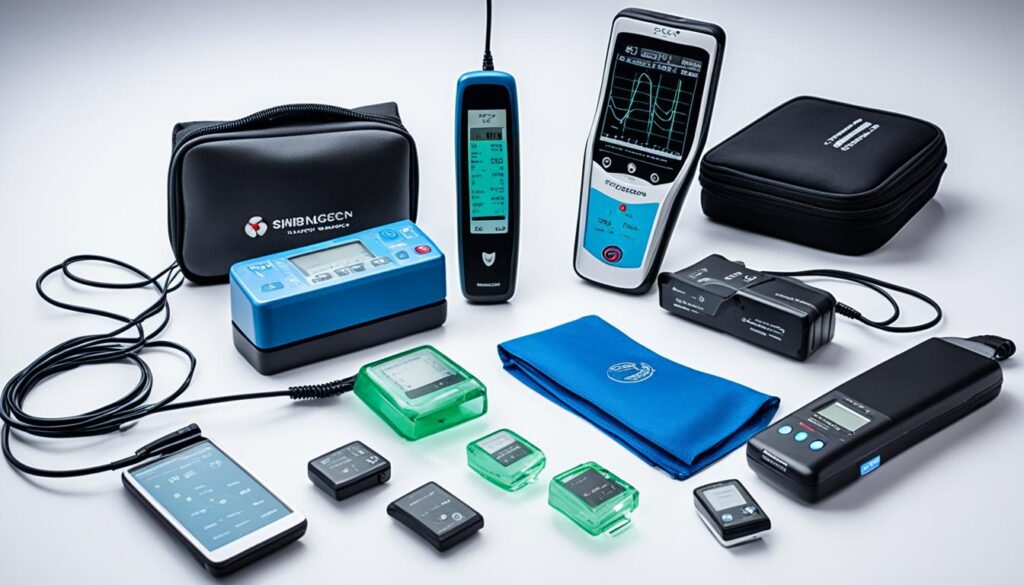
It is important to note that not all protective devices are created equal. While some may offer genuine benefits, others may present no discernible effects. To make informed decisions about personal protection, it is crucial to rely on device effectiveness evaluations, medical equipment assessments, and technology performance analyses conducted by reputable experts. By embracing a discerning approach, individuals can separate snake oil from legitimate protection.
The Importance of Personal Electromagnetic Field Exposure Measurement
Accurate measurement of personal electromagnetic field (EMF) exposure is crucial to assess potential risks and evaluate the effectiveness of protective devices. Various methods and devices are available for measuring EMF exposure, including wearable exposimeters and smartphone apps. These tools can provide valuable data on exposure levels and help individuals make informed decisions about their device usage.
When it comes to measuring personal EMF exposure, wearable exposimeters offer convenience and real-time monitoring. These small devices can be worn on the body and provide continuous measurements throughout the day. They are especially useful for individuals who are concerned about their daily exposure to electromagnetic fields.
On the other hand, smartphone apps that measure EMF exposure have gained popularity due to their accessibility. By utilizing the capabilities of built-in sensors, these apps can measure the EMF levels in the surrounding environment. However, it is important to note that not all smartphone apps are accurate or reliable in their measurements. Some may lack calibration or have limitations in their measurement capabilities.
In order to ensure accurate measurements, it is recommended to use validated and calibrated devices that have been tested for accuracy and reliability. This is particularly important for individuals who rely on EMF protection devices and need accurate exposure data for evaluation.
“Accurate measurement of personal electromagnetic field exposure is crucial to assess potential risks and evaluate the effectiveness of protective devices.”
Further research and development in the field of personal EMF exposure measurement are necessary to improve the accuracy and reliability of these tools. This includes establishing standardized testing protocols, developing calibration methods, and validating the performance of measurement devices and apps.
The ability to accurately measure personal EMF exposure is not only important for individuals but also for researchers and policymakers. It helps in understanding the potential risks associated with electromagnetic field exposure, identifying areas of concern, and formulating appropriate guidelines and regulations.
Overall, accurate measurement of personal electromagnetic field exposure plays a crucial role in evaluating the effectiveness of protective devices and understanding the potential health risks. By using reliable and validated measurement tools, individuals can make informed decisions about their device usage and take necessary precautions to minimize their exposure to electromagnetic fields.
Conclusion
In the realm of personal EMF protection devices, evaluating their effectiveness is crucial to understand their potential benefits in reducing exposure to electromagnetic fields. The study conducted on Skudo® patches has shown promising results in terms of protecting MRI operators from the influences of magnetic fields. The application of these patches resulted in a regularization of bioenergetic levels related to the body’s water system, indicating a positive effect in counteracting the imbalance caused by magnetic fields.
However, it is important to note that further research is necessary to validate these findings, as well as to assess the effectiveness of other devices available on the market. This evaluation is vital in ensuring that individuals can make informed choices when purchasing and using personal EMF protection devices. Not all products may deliver the claimed benefits, and it is crucial for consumers to exercise caution.
Device effectiveness evaluation, medical equipment assessment, technology performance analysis, product efficacy measurement, device efficiency testing, appliance functionality assessment, tool performance evaluation, and gadget effectiveness review are all essential aspects in the ongoing pursuit of developing reliable and effective personal EMF protection devices. By conducting thorough assessments and supporting them with scientific evidence, we can better understand the potential of these devices in reducing the impact of electromagnetic fields on human health.
Source Links
- https://www.wired.com/story/uvc-sanitizers-antimicrobial-cell-phone-radiation-rfid-blocker-tech-scaremongering/
- https://www.ncbi.nlm.nih.gov/pmc/articles/PMC6166365/
- https://www.ncbi.nlm.nih.gov/pmc/articles/PMC9448713/

Subscribe to Our Newsletter

